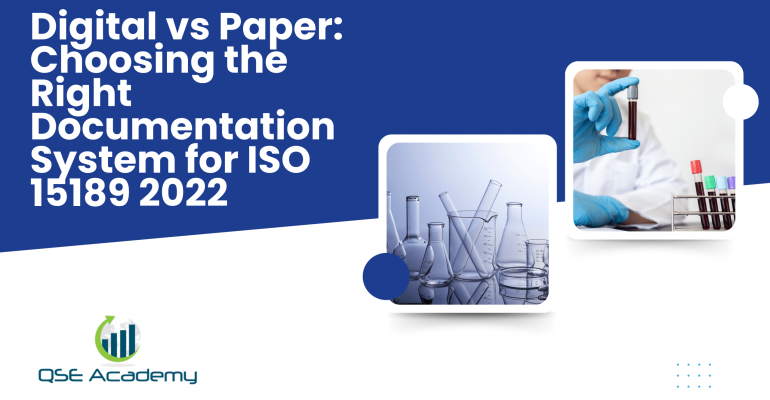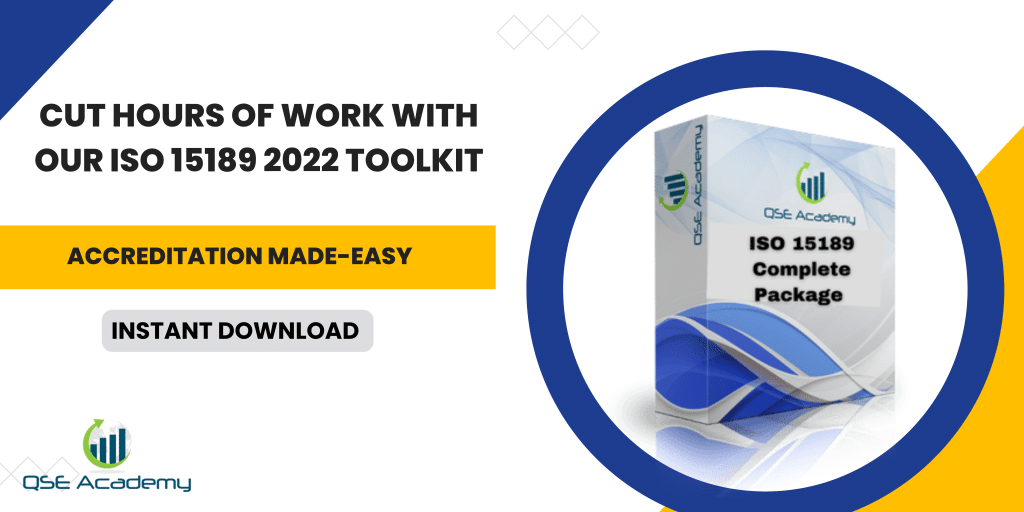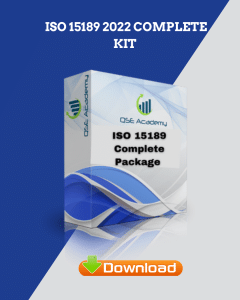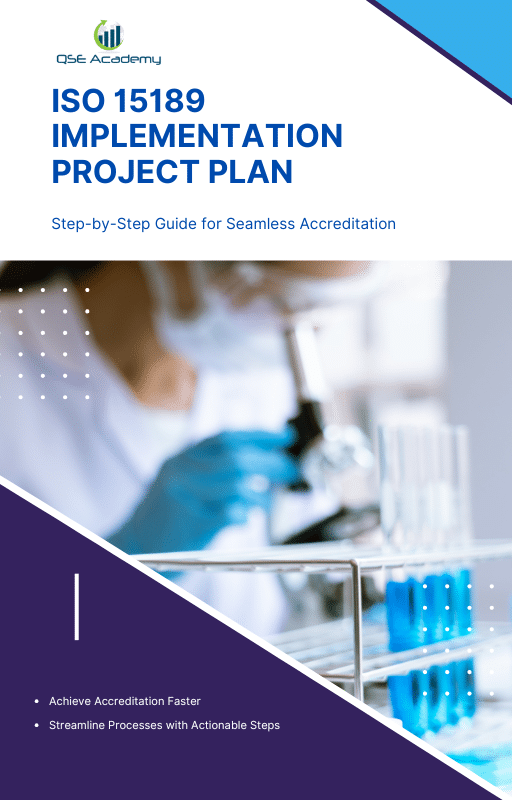Digital vs Paper: Choosing the Right Documentation System for ISO 15189 2022

Digital vs Paper: Choosing the Right Documentation System for ISO 15189 2022
Last Updated on October 22, 2025 by Hafsa J.
Digital or paper: choosing the documentation system adapted to the ISO 15189 2022 standard
Let’s face it: when it comes to ISO 15189 documentation, most labs spend far too much time worrying about format. Should they stick with paper? Go all-digital? Try both and hope for the best?
In my experience working with laboratories in different countries in preparation for ISO 15189 audits, I have found that all three approaches work, and all three fail. It is not a question of tools, but of control, clarity and consistency .
Some labs work perfectly with a simple binder and ink stamps. Others integrate seamlessly with a comprehensive QMS platform. The important thing is that your team can find the most recent document, track it, and prove it’s been approved and reviewed.
This article is here to help you understand this.
You will leave with:
-
A clear picture of what ISO 15189:2022 actually expects from your documentation
-
The advantages and disadvantages of digital, paper and hybrid systems
-
Concrete examples of what works and what to avoid
-
And how to choose the best setup for your lab, not just what’s trendy
Let’s break it down so you can stop guessing and start documenting smarter.
What ISO 15189:2022 expects from your documentation system
It’s not about format, it’s about function.
Voici ce que j’ai constaté : de nombreux laboratoires pensent que la norme ISO 15189 leur recommande de « passer au numérique » ou de « s’en tenir au papier ». Ce n’est pas le cas. La version 2022 de la norme ne tient pas compte du fait que votre procédure opérationnelle standard (SOP) soit imprimée, stockée sur Google Drive ou gérée via une plateforme SMQ haut de gamme.
Ce qui l’ intéresse , c’est de savoir si votre système :
-
Maintient les documents à jour et les versions contrôlées
-
Les rend accessibles aux bonnes personnes (et pas à tout le monde)
-
Suivi des approbations et des modifications
-
Empêche les versions obsolètes de réapparaître
-
Conserve des registres qui soutiennent la traçabilité et la responsabilité
En bref, votre système doit fonctionner.
L’état d’esprit de la documentation de la norme ISO 15189:2022
La nouvelle version s’appuie fortement sur une approche basée sur les risques . Elle vous offre plus de flexibilité dans le choix de la gestion de votre documentation, mais aussi davantage de responsabilité pour garantir une gestion optimale.
Si quelque chose affecte la sécurité des patients, la qualité des résultats ou la conformité réglementaire, l’attente est claire : cela doit être contrôlé, traçable et disponible en temps réel.
Un exemple concret
J’ai travaillé avec un laboratoire privé de taille moyenne qui disposait d’un système papier techniquement fonctionnel, mais le classement manquait de cohérence, les anciennes procédures opérationnelles standard (SOP) étaient encore accessibles et personne ne savait exactement qui avait approuvé quoi en dernier. Lors de leur audit de transition vers la norme ISO 15189:2022, le contrôle des documents est devenu leur principal point faible. Nous avons migré vers un système de dossiers numériques structuré, avec des autorisations d’accès simples, des journaux de versions et un outil de suivi des modifications partagé. Pas de nouveau logiciel. Juste une meilleure structure. Leur prochain audit ? Aucune constatation dans la documentation.
Ce que cela signifie pour vous
L’ISO n’exige pas la perfection. Mais elle exige un système que l’on puisse expliquer et défendre, avec des preuves à l’appui.
Si un auditeur demande :
-
« Qui a approuvé cette version ? »
-
« Comment empêcher le personnel d’utiliser un formulaire obsolète ? »
-
« Où stockez-vous vos SOP retirés ? »
Vous avez besoin de réponses claires, que votre système soit numérique, papier ou hybride.
Systèmes papier : avantages, inconvénients et quand ils sont pertinents
Ne rejetons pas le papier trop vite
Dans un monde où tout se numérise, s’en tenir au papier peut paraître dépassé. Pourtant, la vérité est que les systèmes papier fonctionnent encore , et ils peuvent être performants s’ils sont bien gérés.
J’ai aidé des laboratoires à réussir des audits ISO 15189 avec pour seuls outils des procédures opérationnelles standard imprimées, des journaux manuscrits et des classeurs bien organisés. Alors, ne laissez personne vous dire que le papier est automatiquement synonyme de non-conformité. Cela dit, cela n’est pas sans poser de problèmes.
Avantages d’un système de documentation papier
1. Simple et économique :
aucune licence logicielle requise. Aucune configuration technique requise. Vous pouvez commencer immédiatement avec des classeurs, des tampons et un registre de documents fiable.
2. Familier pour le personnel.
Pour de nombreuses équipes, notamment celles moins formées au numérique, le papier semble plus simple. Elles savent où trouver la procédure opérationnelle standard et comment remplir un formulaire. Aucune connexion requise.
3. Ne dépend pas d’un accès Internet.
Dans les laboratoires où la connectivité est instable ou où le support informatique est limité, le papier assure la cohérence. Vous ne perdez pas l’accès en cas de panne de courant ou de problème réseau.
Inconvénients à surveiller
1. Version Control Is Risky
This is where paper systems fall apart. If you don’t clearly label current vs. obsolete documents—and control how copies are distributed—it’s easy for outdated procedures to stay in circulation.
2. Accessibility Can Be Limited
If you need to review a document from another location, or if someone’s out sick and their binder is locked in an office, you’re stuck.
3. Tracking Changes Takes More Effort
Manual change logs, approval stamps, physical review signatures—it all adds up. And if you forget to update even one, auditors will catch it.
When Paper Still Makes Sense
-
Small labs with fewer staff and slower document turnover
-
Resource-limited settings without consistent IT infrastructure
-
Labs where staff training is a barrier to digital adoption
-
Temporary systems during the early phases of ISO implementation
Real-World Snapshot
One rural hospital lab I worked with in Southeast Asia passed their ISO 15189 audit using nothing but paper. Their secret? Extreme clarity. Every SOP had a version number, an approval signature, and a review date in red ink. Obsolete documents were stamped “VOID” and archived in a separate cabinet. The auditor called it “old school—but perfectly effective.”
Digital Systems: Efficiency, Traceability, and Pitfalls to Avoid
Going Digital Can Be a Game-Changer—If You Do It Right
Let’s be honest—most labs want to go digital. And with good reason. Done well, a digital documentation system can save time, reduce errors, and make audits way less stressful. But here’s the catch: going digital doesn’t automatically make your system compliant.
In my experience, labs that move too fast without a solid plan end up trading one mess for another—just with a fancier interface.
Why Digital Systems Work So Well
1. Real-Time Access
Staff can view SOPs, forms, and policies from any device (with the right permissions). No more hunting down printed binders or sending frantic emails for the latest version.
2. Built-in Version Control
Whether you’re using Google Drive, SharePoint, or a full-blown QMS, you can track who edited what, when, and why. You always know what’s current.
3. Audit Logs and Traceability
Most digital systems automatically log changes, approvals, and access history. That kind of evidence makes auditors happy—and saves you a lot of digging.
4. Easier Collaboration and Reviews
Reviewing a document with three approvers is a nightmare on paper. Digitally? It’s just a few clicks.
But It’s Not All Perfect
1. Staff Training Takes Time
Don’t assume your team knows how to use Google Docs or a new QMS. A poorly trained team will default to shortcuts—and that’s where control breaks down.
2. Overengineering the System
Some labs go all-in with complex platforms that no one understands. If your staff can’t find or update a document easily, the tech is failing you.
3. Risk of “Invisible” Documents
If you don’t clearly label or control draft vs. approved documents, you could end up with multiple versions floating around. And that’s exactly what ISO wants you to avoid.
Choosing the Right Digital Tool
You don’t need to buy expensive software to be compliant. I’ve helped labs build solid systems using:
-
Google Drive + structured folders
-
Microsoft SharePoint + access controls
-
Simple spreadsheets to track version history
-
PDFs with embedded approval fields and change logs
And yes—if you have the resources, platforms like Q-Pulse, MasterControl, or LIMS-integrated QMS can streamline everything. Just make sure you have someone on your team who knows how to run it.
Real-World Example
I helped a diagnostics lab transition from scattered Word files to a structured Google Workspace setup. We created a clear folder hierarchy, set strict access levels, and added a document change tracker. Result? They cut document-related audit prep time by over 70%, and their team actually started using the SOPs regularly.
Hybrid Systems: The Best of Both Worlds?
Sometimes the Smartest Choice Is Somewhere in the Middle
Let’s be honest—not every lab is ready (or able) to go fully digital. And for some, staying 100% on paper just isn’t practical. That’s where hybrid systems come in—and in my experience, they can work incredibly well when designed intentionally.
A hybrid documentation system uses both digital and paper tools, balancing convenience, accessibility, and compliance. But here’s the key: it has to be coordinated. If your paper and digital systems aren’t talking to each other, you’re just doubling the confusion.
What a Good Hybrid System Looks Like
1. Core Control in the Cloud
All official versions—policies, SOPs, forms—live in a secure digital system. This is your “source of truth” for audits, updates, and record-keeping.
2. Printed Copies Where It Makes Sense
At the bench, in sample receiving, near the fridge—some places need a printed SOP or checklist. That’s fine—as long as it’s clearly marked “Controlled Copy” and regularly checked for currency.
3. Clear Change Management
When a document is updated online, someone’s assigned to pull and replace any outdated paper versions. No guesswork. No floating old forms.
Real-World Insight
One of my clients, a midsize hospital lab, uses a cloud-based folder system for all document approvals, version tracking, and reviews. But every department also keeps printed SOPs at the workstation—clearly stamped with the version number and a “Valid Until” date. Every quarter, they do a document sweep to pull outdated copies and replace them. Their last ISO audit? Zero issues with documentation access or control.
How to Make It Work (Without Going Crazy)
-
Set up a centralized change tracker that logs when each document was last reviewed and when the printed copy was updated
-
Assign a document steward in each department responsible for paper copy control
-
Use QR codes on printed documents to link directly to the live digital version—easy, fast, and audit-friendly
-
Create a brief “Documentation Format Policy” explaining how digital and paper systems interact. Auditors love this kind of clarity.
When Hybrid Makes Sense
-
You’re transitioning to digital but not fully there yet
-
Some staff aren’t comfortable with digital tools (yet)
-
Certain tasks require quick paper access (e.g., spill response SOPs near chemical storage)
-
You need redundancy in case of internet downtime or power loss
Making the Right Choice for Your Lab
There’s No One-Size-Fits-All—And That’s a Good Thing
Now that we’ve covered the pros and cons of paper, digital, and hybrid systems, you might be wondering: “So which one is right for us?”
Here’s what I tell every lab I work with—the best system is the one your team will actually use and maintain. ISO 15189:2022 gives you the freedom to choose your format, but it also expects that choice to support real-world quality, traceability, and control.
Let’s walk through how to make the right call for your environment.
Ask These Questions Before You Commit
1. How big is your lab—and how fast are things changing?
A small lab with stable processes might manage fine with paper. A larger lab with frequent SOP updates probably needs the efficiency of digital or hybrid tools.
2. What’s your staff’s comfort level with digital systems?
If your team struggles with basic file management, rolling out a complex QMS platform might do more harm than good—at least at first. Start simple and grow from there.
3. Do you have reliable internet and IT support?
If not, paper might be safer in the short term. Or consider a hybrid system that doesn’t rely entirely on online access.
4. How often are documents updated or reviewed?
The more often things change, the more helpful version tracking becomes. Digital systems shine here—but only if updates are managed centrally and communicated clearly.
5. Who will maintain the system?
Whether it’s a spreadsheet, cloud drive, or QMS platform, someone needs to own it. If you don’t assign ownership, it will fall apart.
Real Talk About Budget vs. Value
I’ve seen labs spend thousands on software they never really used—and others run efficient, ISO-compliant systems with nothing more than free tools and a solid SOP process. Don’t chase features. Chase usability and clarity.
You don’t need the fanciest setup. You need one that’s:
-
Easy to follow
-
Easy to update
-
Easy to defend during an audit
Final Tip
If you’re not sure, start small. Choose one area—like equipment records or staff training logs—and try managing it digitally. See how your team responds before expanding it to the entire QMS.
Pro Tips / Insight Boxes
Pro Tip: Label Your Printed Documents Clearly
If you’re keeping paper SOPs at workstations, stamp them with the version number, approval date, and “Controlled Copy” in bold. It shows auditors you’re in control—even without a fancy system.
Field-Tested Insight: Don’t Let IT Lead Alone
I’ve seen labs hand off digital documentation to their IT department—without involving quality. Big mistake. Your QMS should reflect real lab workflows, not just tech capabilities. Quality should lead, with IT supporting—not the other way around.
Expert Advice: Use Version Naming Conventions
Whether you’re digital or paper-based, stick to a format like SOP-001_v3.2. It’s clear, easy to track, and instantly tells staff which version they’re using. Skip the “Final_FINAL” document names—we’ve all been there.
Implementation Tip: Create a Simple Format Policy
Outline which documents are digital, which are printed, and who maintains them. Even half a page is enough. Auditors appreciate seeing intentional structure—and your team will too.
Common Mistakes and FAQs
Common Mistakes to Avoid When Choosing a Documentation System
Mistake #1: Assuming Digital Automatically Means Compliant
Just because you’ve moved everything to Google Drive doesn’t mean you’re audit-ready. If you don’t have version control, approval records, or access restrictions in place, ISO will call you out on it.
Mistake #2: Letting Old Versions Linger
Whether you’re paper-based or digital, outdated documents hanging around is a red flag. I’ve seen labs fail audits because a tech used an old SOP that was still sitting on a shelf—or buried in an “archive” folder no one checked.
Mistake #3: Using Email for Document Distribution
It seems easy—just send the updated SOP to your team. But without tracking who received it, who read it, and whether the old version was replaced, you’ve lost control. ISO expects a documented trail.
Erreur n° 4 : Choisir un système qui n’appartient à personne
. C’est un problème majeur. Sans responsable clairement désigné pour la maintenance et la révision du système, il s’effondrera . Même la meilleure technologie ou le système de classeurs le plus performant a besoin d’un humain aux commandes.
Questions fréquemment posées
La norme ISO 15189:2022 exige-t-elle un système de documentation numérique ?
Non. L’ISO n’impose pas de format, mais plutôt le contrôle, l’accessibilité et la traçabilité . Vous pouvez utiliser du papier, du numérique ou une combinaison des deux. Assurez-vous simplement que cela fonctionne et que vous pouvez le prouver.
Pouvons-nous passer progressivement au numérique ?
Absolument. Je le recommande même. Commencez par les domaines à fort impact, comme les registres de contrôle des documents ou les dossiers de formation, avant de passer à la gestion complète des procédures opérationnelles standard (SOP).
Que se passe-t-il si notre système plante ou tombe en panne pendant un audit ?
Cela arrive. C’est pourquoi je recommande toujours d’imprimer les procédures opérationnelles standard (SOP) clés et de les conserver à disposition comme sauvegarde. Tant que vous faites preuve de préparation et de continuité, les évaluateurs ne vous pénaliseront pas.
Choisissez ce qui fonctionne, pas seulement ce qui est tendance
S’il y a une chose que j’ai apprise en aidant des laboratoires de différents pays à se préparer aux audits ISO 15189, c’est qu’il ne s’agit pas de passer au numérique ou de rester sur papier. Il s’agit de choisir un système adapté à la réalité de votre laboratoire et conforme à la norme sans s’encombrer.
ISO 15189:2022 gives you a lot of freedom of choice. But it also raises the bar: your documentation system must be organized, traceable, and actually used. Whether it’s a shared drive with clear version tracking, printed standard operating procedures with handwritten approvals, or a mix of both, you’re in a good position if your system works and your team trusts it.
So, before you jump into a tech platform or print another binder, take a step back and ask yourself:
Will this make it easier for our lab to follow procedures, track changes, and confidently pass an audit?
If the answer is yes, you are on the right track.
Need help choosing the right system?
Download our free “ISO 15189 Documentation Format Choice List” to clearly assess your options, or contact us for a consultation. I will guide you through your setup and help you choose the best solution for your lab, your team, and your compliance goals.
Whether it’s ISO 9001, ISO 22000, or the cosmetics-focused ISO 22716, I’ve spent my career I’m not here to call myself an expert—I prefer “enthusiast” because I truly love what I do. When I’m not writing about standards, you’ll probably find me playing Piano 🎹, connecting with people, or diving into my next big project💫. I’m an engineer specialized in the food and agricultural industry
make ISO standards less intimidating and more approachable for everyone.
turning complex jargon into clear, actionable steps that businesses can actually use.
There’s something incredibly rewarding about helping people navigate food safety and quality management systems
in a way that feels simple, practical, and even enjoyable.
I have a Master’s in QHSE management and over 12 years of experience as a Quality Manager
I’ve helped more than 15 companies implement ISO 9001, ISO 22000, ISO 22716, GMP, and other standards
My clients include food producers, cosmetics manufacturers, laboratories, and service companies
I believe quality systems should be simple, useful, and efficient.












